2017
DECEMBER
I am busy in the studio and the kitchen labeling and packaging all the wonderful goodies to bring to the annual Winter Open House! I have found a wonderful location for the event and am looking forward to seeing all of you. Please come! This is a wonderful opportunity for me to get to know you outside of a teaching contextt, so share a sip of cider or ginger beer and talk about our gardens, chickens and what have you. My farm store is not ready yet…alas…but maybe perhaps still in time for christmas. If so I will send a quick note about it.
Winter Open House ~ It’s a Party!!!
Holiday Social, Tasting and Shopping
Saturday and Sunday December 9 &10, noon- 4:00pm each day
3056 Hillegass Avenue at the corner of Woolsey in Berkeley
Feel free to bring friends, forward this email and spread the word!
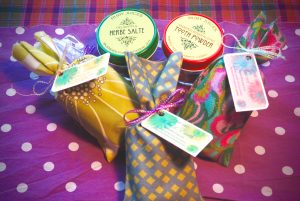
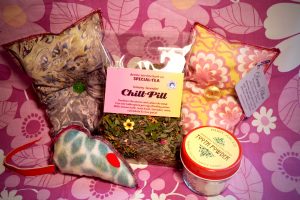

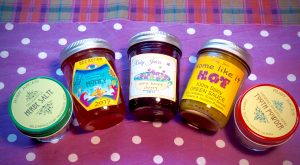
Please join me for a year end social and sale! There will be a gazillion things to taste and explore plus amazing deals on homemade goodies. As always everything is ultra-local, super small-batch and only available once a year. OIfferings are mostly below market price for a similar hand-crafted item, and a round-up/round down policy applies– if you feel like it is all together too cheap, feel free to round up. If you need a price break, ask and we’ll see what we can do.
Tasting will include: Homemade mustard, mead, plum wine, ginger beer, cultured butter, real caramels, jam and honey
A sample of what will be available for purchase:
Pantry: low-sugar jams, Bee-centric all natural raw honey, artisan mustard, herb salt, caramels, mead, butter, juice concentrates, apple sauce, pickled veggies
Bath & Body: Handmade soaps, tinctures, salves, lip balm, tooth powderand more
Mercantile: Dream pillow sachets, catnip cat toys, beeswax candles, butcher block conditioner,
Books: Urban Homesteading, Rabbit Zine, Beeswax Zine, Every Day Cheesemaking
Herbal Preparations: Salves, tinctures, tea
Stocking Stuffers: herbs grown here, seeds, seed balls, mini-soaps and more
Art: Handmade tiles, cups bowls, arts cards, postcards and more
****PLUS discounted seconds, half off last years stock and pay what you want grab bag.
Volunteer at the Open House
I could use some help each day, greeting people, working the tasting table and taking money. Shifts are 2 hours & 15 minutes: 11:45-2pm or 1:45-4pm. In exchange for your help you will receive a bag of homemade goodies. If you’d like to help out please reply to this email and let me know if you have a preferred time slot or if I can schedule you in as needed. Thanks!!
Winter Learning & Gifting Opportunities: Gift Certificates and Winter Cheesemaking Intensive
Yes—we have gift certificates! While our Spring season won’t be listed until 2018, you can still give the gift of learning to your friends and family. Just click here to read about our gifting options and purchase a certificate today As well the last weekend in January Well be offering our Cheesemaking Intensive—two fun filled days of making and eating while learning the magic of turning milk into a variety of cultured and fermented products including, ricotta, feta, mozarella and brie. Register for Cheesemaking Intensive HERE.
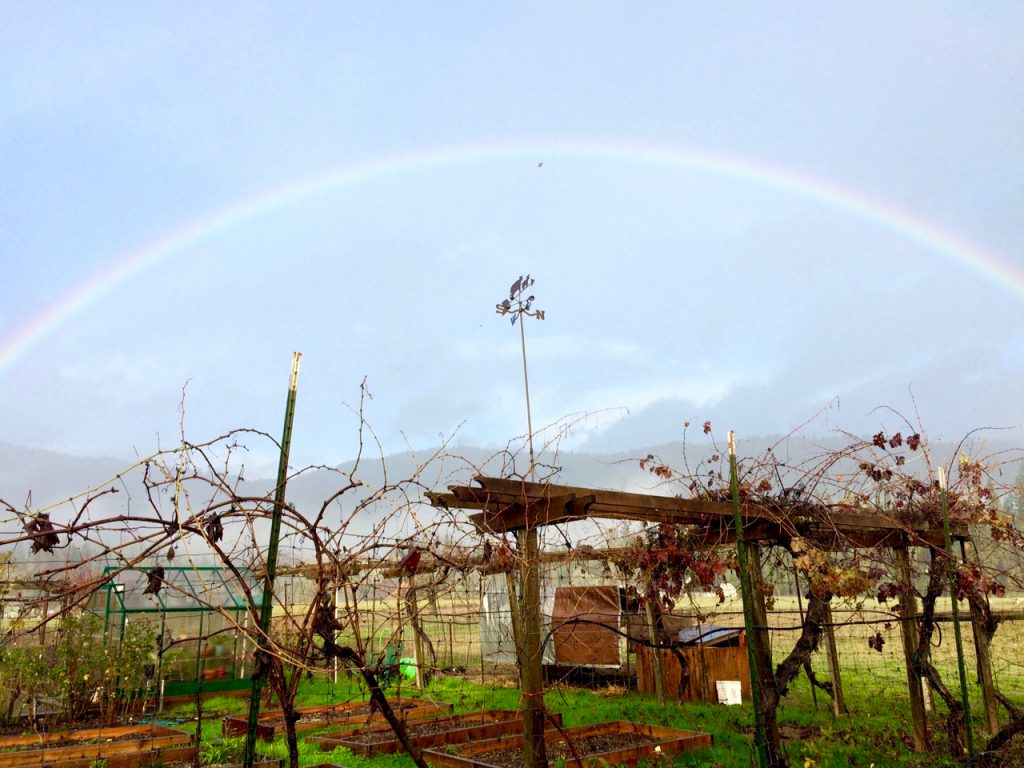 December in the Garden: Making Way for Spring
December in the Garden: Making Way for Spring
December is the quietest month in the garden in the Bay Area, but it doesn’t mean you can’t get out there on a sunny day and get some important work done. This is a great time to get a head start on weeding before things get out of hand. Oxalis that has started to spring up from the fall rains should be pulled religiously as well as other weeds. Perennials can be cut back and pruned—things like echinacea, yarrow, salvia, penstemon, oregano, marjorum, rosemany, coreopsis, hollyhock and similar can be pruned pretty much to the ground to make space for new growth come Spring. This is also a fine time to dig out and move any perennials that need moving. Once perennial beds are cleared, cut back and weeded, a generous top dressing of compost can be applied. Generous means 1-3 inches. It can be dressed directly in top of any crowns that are cut to their base, but should be kept away from the base of woody perennials and trees like pineapple guava or kiwi. Afraid to hurt your plants? I love this video on Fall clearing from Annie of Annie’s Annuals.
News From the North
This has been a big harvest month…we just today dispatched and processed our turkeys which we have been growing since July. They weighed in at 18 pounds and 33 pounds respectively. After I send this newsletter this morning, the butcher will come out to dispatch our steer and 3 ram lambs. Some of this is for the freezer and some is for sale (see below). Otherwise we are still battening down the hatches for winter. A new sheep shelter has been erected in the home pasture and we continue to hone our skills at moving our stock from pastures to pasture—sometimes that goes easy and well, sometimes you get to walk around the pasture in circles for an hour and the critters still aren’t where you want them to go. Intermittant rain has given us a great showing of rainbows and our new hearth is beaming as we start up with regular fires in the stove.
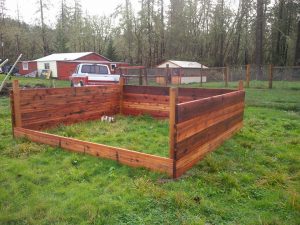
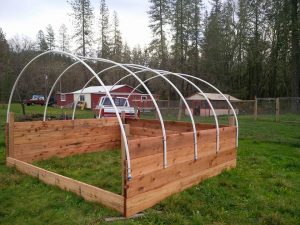
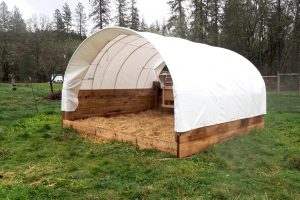
2018 Schedule
We expect our Spring season to be posted early in February and for classes to run late February through mid June. A return of the Urban Farm Tours is being considered and will be announced at the same time.
Call for Proposals
Have a skill or something you’d like to share with the world? We are hoping to add a few faculty and topics to our spring calendar. While we do not double up on topics we already offer (you can see the current complete offerings on our browse classe page), we are always looking for new topics of interest to the homesteading community. Please learn more details about teaching for us and guidelines for making a proposal at Teaching for IUH. Deadline for submission is January 31.
Pasture Fed Beef & Lamb
Currently we have one whole lamb available (small-18-30 pounds cut & wrapped) as well as grass fed beef by the pound, steaks and ground. These are happy healthy pasture fed animals. If you are interested to know more about this, email me and I will get back to you with details in a couple of days. 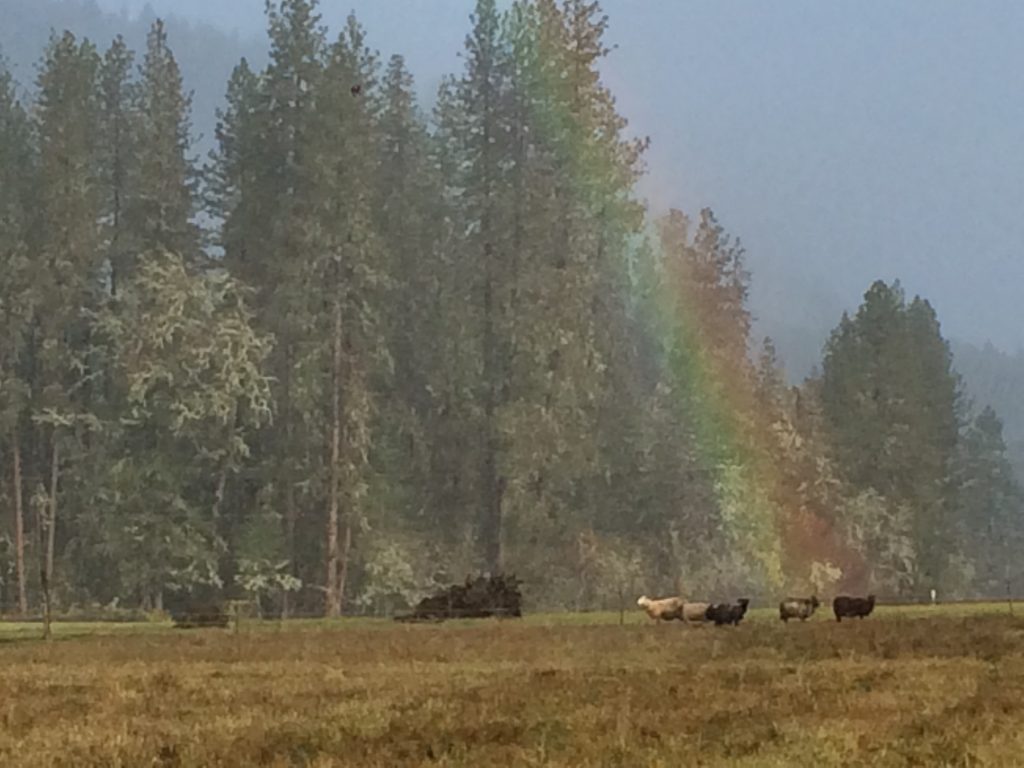
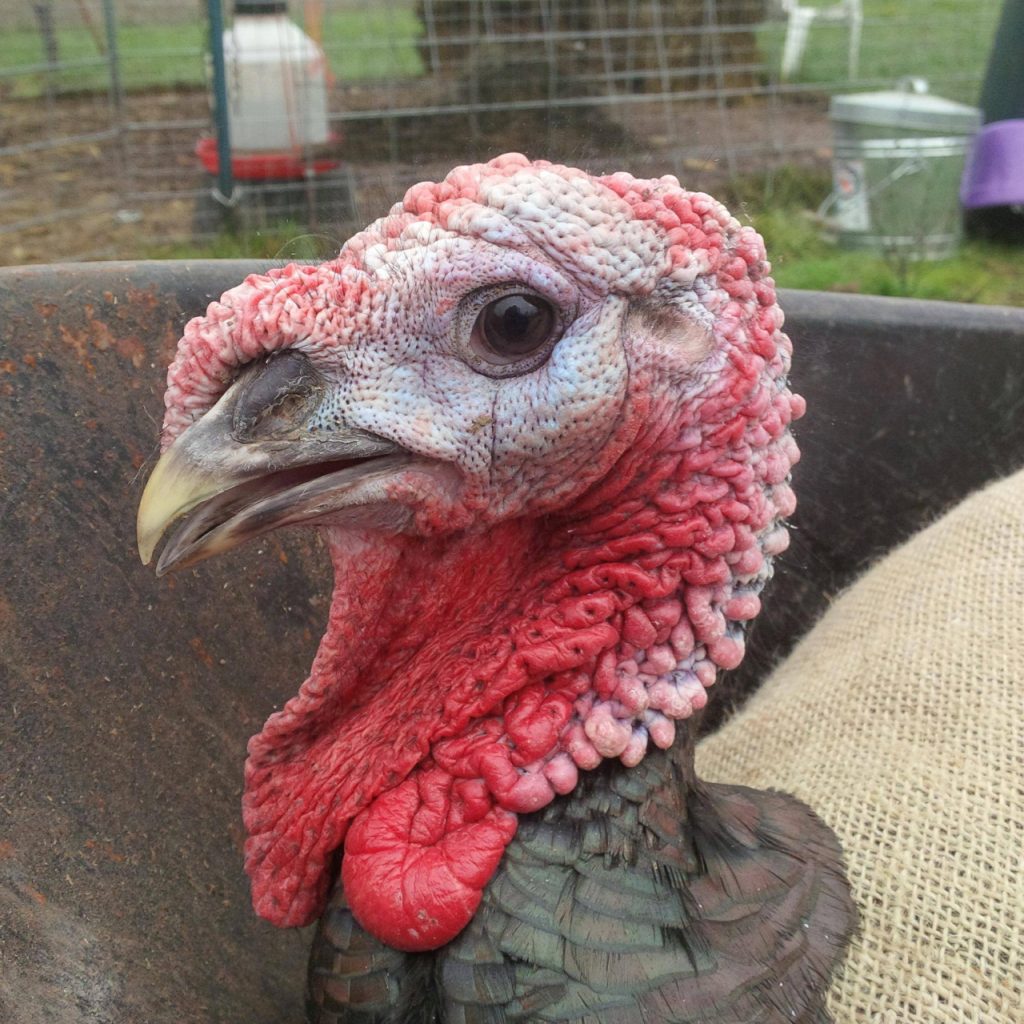 photos: K.Ruby/Jreed
photos: K.Ruby/Jreed
NOVEMBER
Lots to share this month, so scroll down for topic or go straight to the bottom to see the wonderful offerings we have this month—so much good stuff to learn! It has been an intense 6 months in the news with race riots, mass murders, hurricanes and firestorms up and down the west coast including the terrible tragedy in Sonoma & Napa Counties. As the veil grows thin and the days grow short, it is time to gather with friends and loved ones to take stock: to grieve what is lost and to celebrate and give thanks for what we can. November starts with Day of the Dead and ends with Thanksgiving so whether you celebrate either or both I hope you find peace as the year slowly rolls to a close.
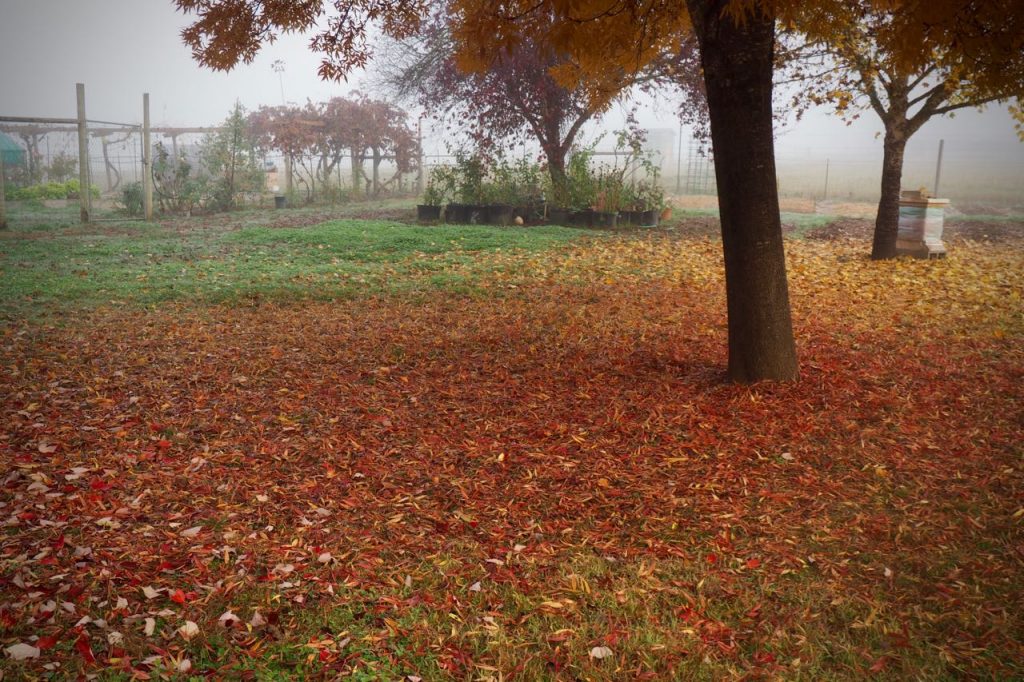 Website Struggles
Website Struggles
The good news is the website is back online and you can register for classes! A few people have told me the site is not secure and they cannot get to it through their firewall. Also the site seems to go into 500 error mode a few times a day with no reason. If anyone has some ideas about this, feel free to contact me. And if you encounter this while trying to register please do check back in a few minutes as it seems not to persist. My entire digital world was hacked and in the process of cleaning up the maliscious files my new host banned my account and refused to host me. I have since learned how better to protect my sites and they are up and functioning on my old host, and my fingers are crossed this continues to work until my winter break, when I will overhaul and debug. If you are having trouble registering you are always welcome to email me directly at this address to register and pay for classes.
In the Garden ~ Garlic Time!
While November is mostly quiet time for Bay Area gardens you can still get your garlic in the ground in the next couple weeks. If you forgot to buy specialty heirloom garlic, any old grocery store variety will work fine. Unless it says different, most garlic in stores is a variety called California Early. Just break apart the garlic head into cloves, leaving the papery wrappers on. The pointy end goes to the sky, the rough end where they were connected ,towards the earth. Plant 6” apart and 1-2 inches deep. You don’t even have to water it—the rain will start it growing. Later in the spring water normally with everything else. Ready to harvest when the outer leaves start to dry and die in June. Once you harvest, let it air dry to cure for a week or two before storing. And for next year, check out my favorite garlic supplier, Filaree Farm, and get yourself some fancy heirloom garlic—order in the spring, receive it in the fall in time to plant.
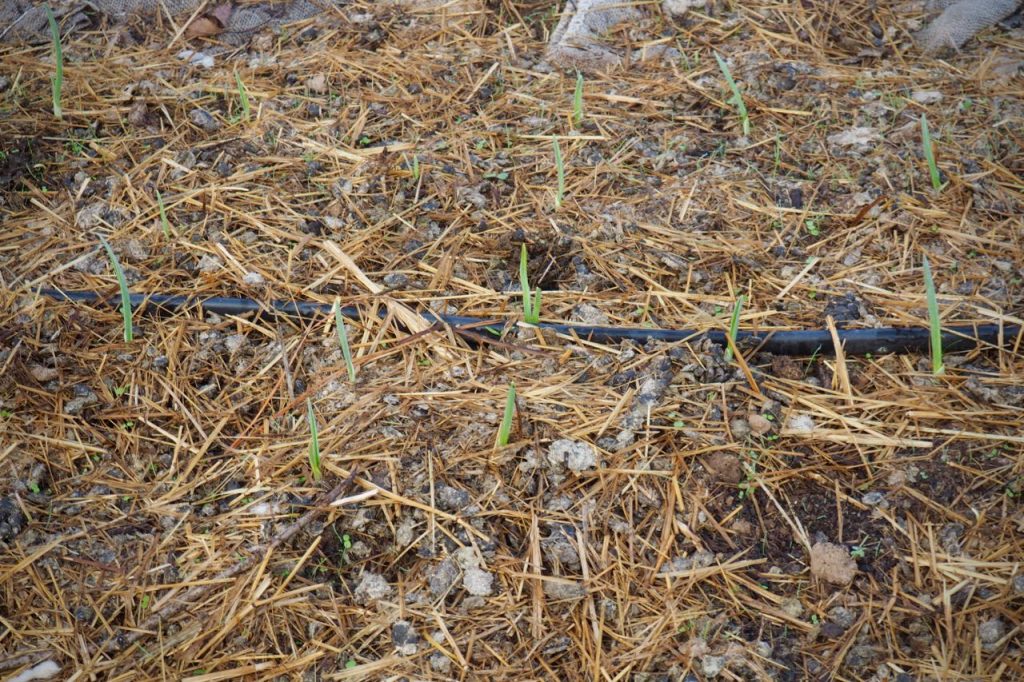
little sneaky garlic shoots
News From the North
A week of hard frost at the beginning of October pretty much called an end to my summer garden and alerted me to the reality that a hoop house and a green house is a neccessity here and I have missed the timing boat on that again, Arg! But the last round of lettuce is still going strong and I have carrots coming out my ears, which the bunnies and the humans are all enjoying immensely. After the frost we have had 3 weeks of incredibley glorious fall weather which has enabled me to finally weed out and reclaim the original flower beds inherited from the previous owners and to start to amend them. Can you imagine living somewhere for 20 years and never once amending the soil? And next on the list will be raking raking raking as the leaves fall and this cyles comes to an end. Lastly, I welcome two new members to my rabbit herd. Fireflye and Mudslide are french angoras. I picked up at the Flock & Fiber festival in Canby, Oregon.

Fireflye & Mudslide
Bee Blume’s Fantastic Farm Store ~ fantasticfarmstore.com
Don’t look yet! The Farm Store is far from ready! It will go live shortly after the Winter Open House and will feature all my small batch, hand-crafted goodies…there will also be gift certificates and an annual subscription option—get goodies delivered 3 times a year!
Ruby’s Wild & Wonderful Winter Open House
Saturday & Sunday December 9 & 10, noon to 4 each day.
Yay! I found an amazing home to have my Winter Open House in…a wonderful brown shingle in the Rockridge Area of Berkeley. It is going to be a blast this year, so mark you calendars and plan to swing by—taste some homemade wine, mustard and jam, speak to interesting people and peruse my homemade goodies. Remember this is a party! There will be lots to taste and explore and shopping is not at all required. Mark your calendars now and I will send out the address in the December newsletter.
Offally Good ~ Rabbit Liver Pate
I offer this recipe in honor of Seth’s upcoming organ meats class and because it is so yummy and healthy!
Rabbit Livers from the recent harvest (chicken liver can also be used)..Usually 5 or 6
1-2 Eggs
2 Teaspoons Butter
1/4 cup finely diced red onion
Salt & Pepper to taste
1 heaping Tablespoon Schmalz (rendered chicken fat–coconut oil or ghee can also be used).
Cut the gall bladders out of the livers. Cook in butter over low heat until browned on each side. Boil your eggs. Put cooked livers and boiled eggs into a food processer and process until almost smooth (how smooth is a matter of taste, I like mine a little chunky). Mix in 1/4 finely diced red onion and your schmalz (ghee or coconut oil). Salt and pepper to taste. Serve on crackers, in a sandwich, or for the paleo amongst you, on celery stalk or leaves of little gem lettuce.
CLASSES
We’ve got some really awesome classes this month from both Seth and I. The Whole Lamb Butchery class has only a few spots left in it so hurry to sign up if you wanted to take that class. Also from Seth an amazing class on cooking with organ meats—these precious nutritious delicacies have fallen out of favor for no good reason and recipes and processes have been forgotten—Join us for Offally good and learn to use more of the animal. He will also teach a class on cooking for parties/large groups and end our season with Backyard Mushroom Cultivation. I will be teaching a weekend of favorites including Fermentation:The Works, Soapmaking and Introduction to Natural Beekeeping. And a special event: Holiday Homestead Giftmaking we make and craft and party on a Friday evening bring a friend!
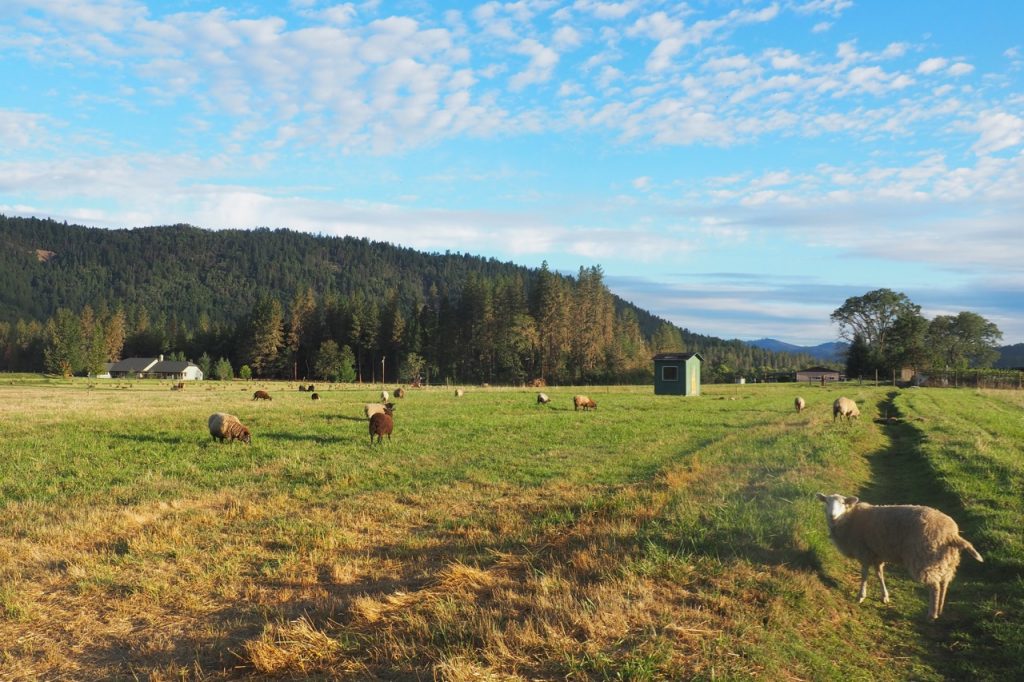
pastoral autumn scene with sheeps
OCTOBER
Greetings Kitchen Witches, Garden Gnomes, and DIY Revivalists! Here we are in October already–time to start to harvest our year and take stock of what has grown and flourished and what has struggled to survive. Time to start the process of letting go of what is no longer needed and letting it return to the earth. Time to prepare our larders for the leaner times. October 7th marks my one year anniversary of moving North. I am stacking firewood, bucking hay, and sealing the roof to prepare for Winter. At the same time Autumn is in full swing with gorgeous days and an abundant garden.
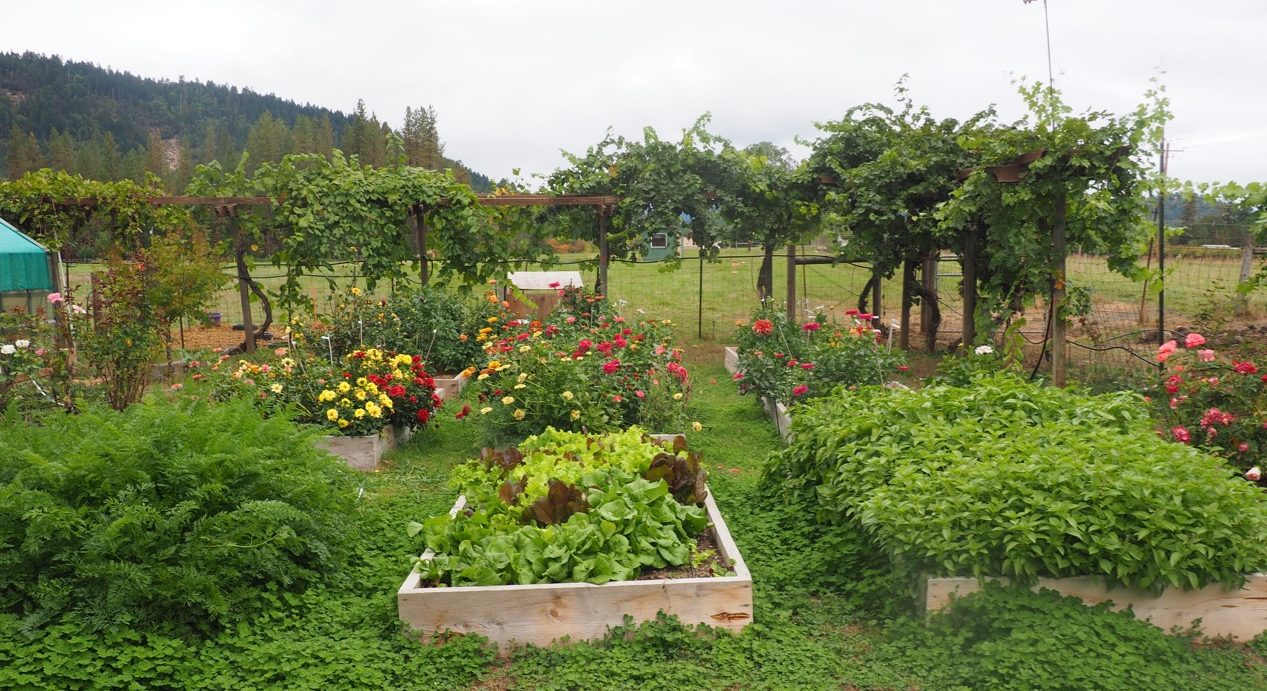
Fall abundance: Carrots, salad greens and basil, with zinnias and dahlias behind
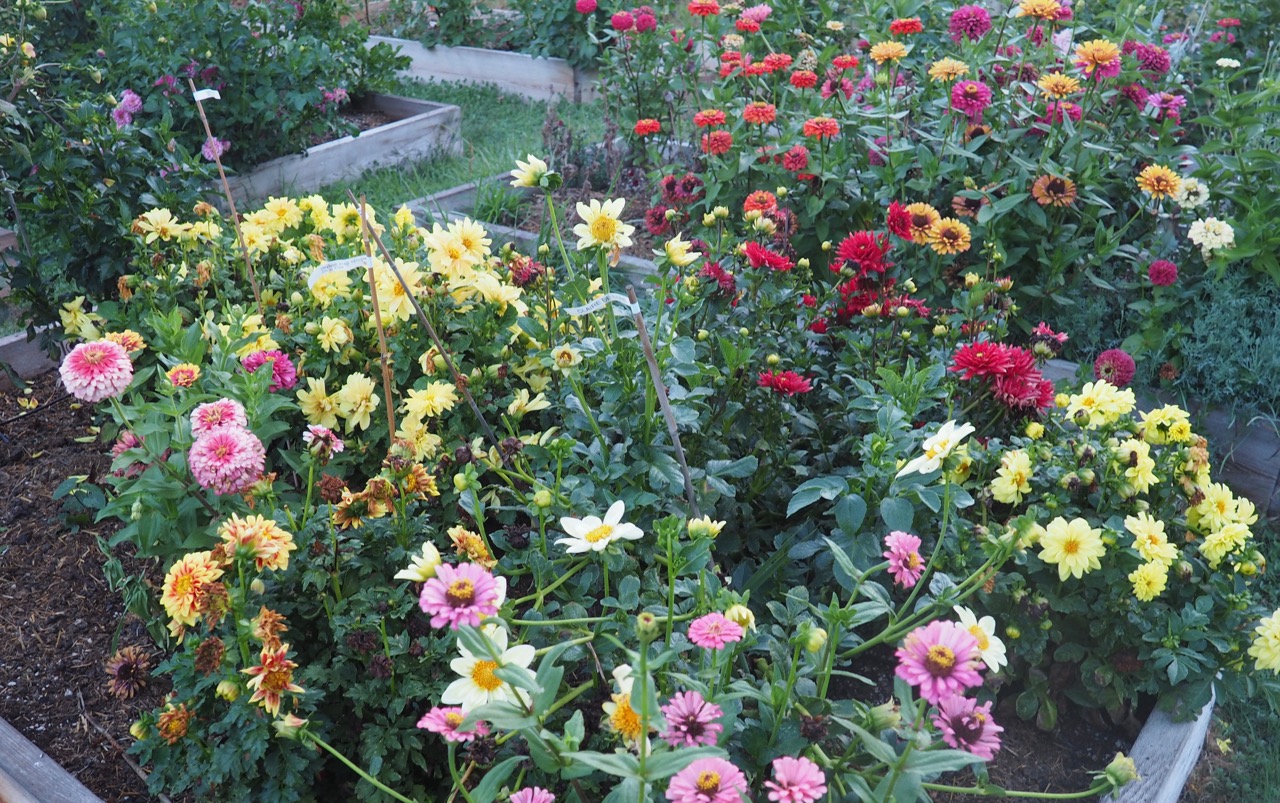
Fall abundance: Zinnias and DahliasFall abundance: Zinnias and Dahlias
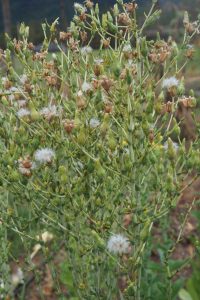
Lettuce going to seed
Garden Tips
Powdery Mildew. If you live and garden in the bay area you have certainly encountered powdery mildew on your cucurbits (squash, cucumbers) and other plants in the dry yet foggy summer and autumn months. I recently heard
of an effective control for it. Start by cutting off the worst affected leaves and tossing them in the garbage or city compost (not in your home compost!). Then spray with a solution of 1 part whey and 2 parts water. Where do you get whey? If you are not making cheese you can get some by straining yogurt through a fine cloth overnight (a piece of muslin works well).
Saving Seed. Let’s just say you intentionally let that lettuce and basil bolt and go to seed, OK? Those are two plants you can simply let dry out and then take the seed off them for next year. Lettuce is in the sunflower family. Just like dandelions, they make a little fluffy seed head. Once you see the fluff, cut the entire stalk, turn it upside down in a paper bag and put it in a dry spot (not outside where it will get damp at night). When completely dry shake the stalk and the seed will fall into the bag. All plants in this family will come true to variety when saved and planted next year…so you can save the seed of lettuce, chicory, sunflowers and zinnias by simply letting the dry on the plant. All the plants in the mint family can also be saved this way—these include basil, peppermint, catnip, thyme and oregano. And you never have to buy tomato seeds again! Just squeeze the seeds from a ripe tomato into a cup, add a little water, let it ferment for a day or two, then strain and dry on a paper towel. Want to know more? Seeds like corn, carrot, broccoli and squash need special techniques, read my article here or purchase the seed saving bible, Seed to Seed by Suzanne Ashworth.
The Gardening & Homesteading Skills Summit
I am hosting an online summit in collaboration with The Shift Network that is coming up this month October 17-19. The summit is free to listen in and will include interview with 20 experts in the various fields related to homesteading. We have a few really high profile speakers, Sally Fallon (Nourishing Traditions), John Jeavons (Grow Biointensive) and Sandor Katz (Wild Fermentation), but also some great locals including former IUH faculty Maya Blow (SoulFlower Farm), Novella Carpenter (Farm City) and Nicole Easterday (FARMcurious). The summit website is already live to peruse, but I will also send out one dedicated email later this month. Did I mention it is FREE to listen in?
News From the North
Autumn is my favorite season here so far. Things are starting to slowly green up. Gorgeous fall days in the 70s and 80s, followed by cool moist nights. Stunning skies. Now recovering from the brutal heat of summer, the roses are all re-blooming and the zinnias and Dahlias are in full form. I have been struggling to keep up with the grape harvest, which is abundant. And my stocks of jam, dried fruit, homemade wines and more are piling up in preparation for the coming Winter Open House. Our critter count is at an all time high…the chicks hatched this summer are getting integrated into our flocks, the turkeys are getting big. Our youngest guardian dog, Mr. Bigs is getting giant and we have a new shop cat for mouse control, “Sweet Pea.” At a recent visit to a fiber festival in Northern Oregon, a couple of angora bunnies hopped in the car with me…..ooops!
I hope to have our farm website and store up before christmas so that those of you who can’t join me for my Winter Open House can still purchase some fabulous goodies. Coming in 2018 we hope to have camping opportunities here as well as lamb for purchase.
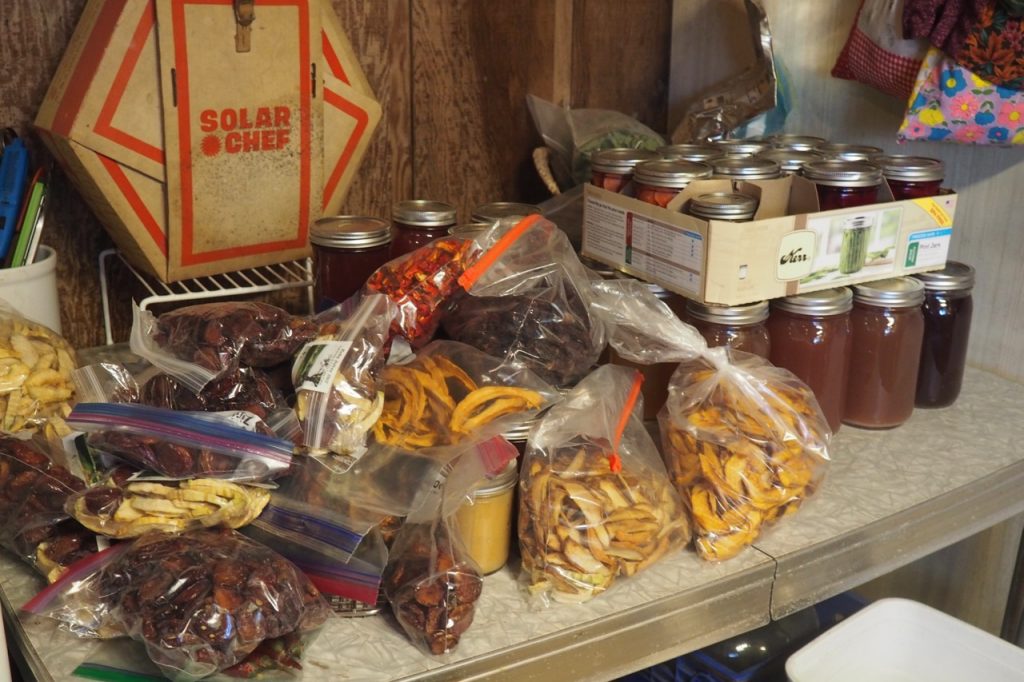
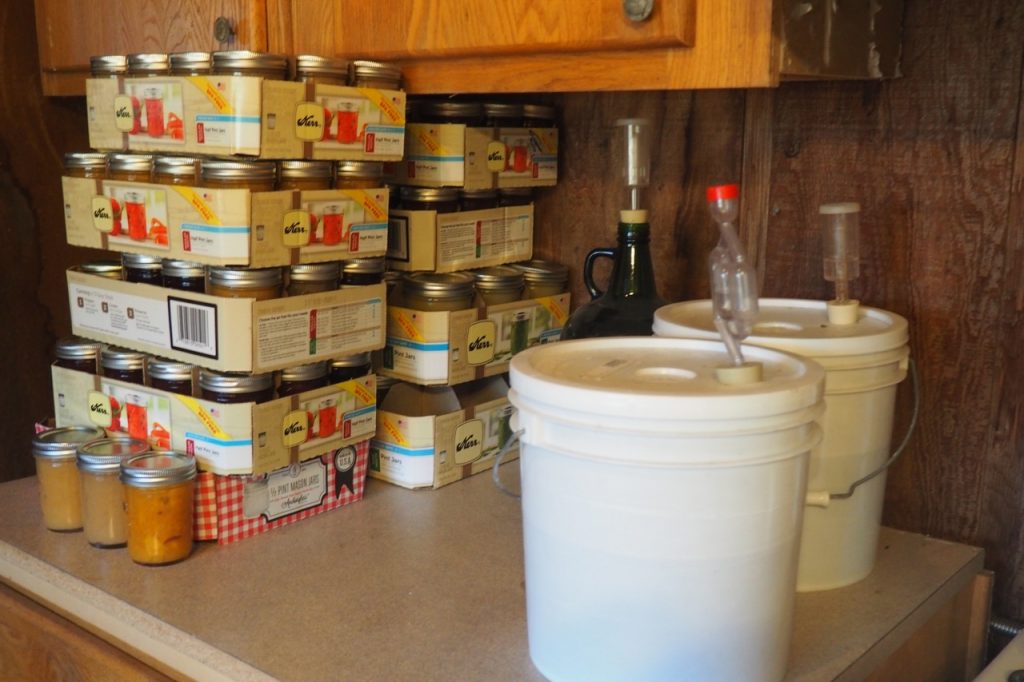
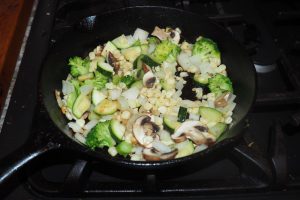 Favorites From the Kitchen: Garden Fritata
Favorites From the Kitchen: Garden Fritata
Small cast iron pan
Tab of butter
Half an onion
1-2 cups Chopped Veggies: Zucchini, Broccoli, Peppers, Brussel Sprouts, Mushroom….etc. 1-2 sausages sliced into rounds (optional)
1/4 cup grated or crumbled cheese (optional)
salt, pepper & fresh basill or thyme if you have the
6 eggs
Preheat oven to 350. Saute onions, veggies and optional sausage on medium heat until soft. Add salt, pepper & herbs. Crack and whisk eggs in a bowl. Pour eggs over the cooked veggies and stir a little to make sure the eggs distribute over whole pan. Turn down the heat. Let sit of the stove for about 5 minutes. If you are adding cheese, spread evenly over the top, then put the pan into the oven. It is done when the eggs start to puff up and the cheese is melted—usually 5-8 minutes. Let cool ion the stove for 5 minutes then serve. Feeds 2 people as a meal or 4 as a side portion

Sweet Pea Petunia Jones-We hope she is a good mouser!
SEPTEMBER
Welcome back from burning man, the eclipse festival, camping sojourns and wherever else you may have been! It has been an apocalyptic month with hurricanes, heat waves, political unrest and smoke storms…I haven’t seen the blue sky in weeks here with air quality at hazard levels due to the intense smoke from a vast array of wildfires. Smoke filled skies made it easy to see the eclipse though—and rather than a heatwave we’ve had weird dark hazy muggy days. Nevertheless the dahlia collection is finally thriving and blooming, tomatoes are in abundance, as are peppers, melons and apples. A gazillion grapes will come ripe in the next couple weeks and I don’t even have a plan for them yet. But it is time to get back to school, back to work and re focus on projects after all the summer fun.
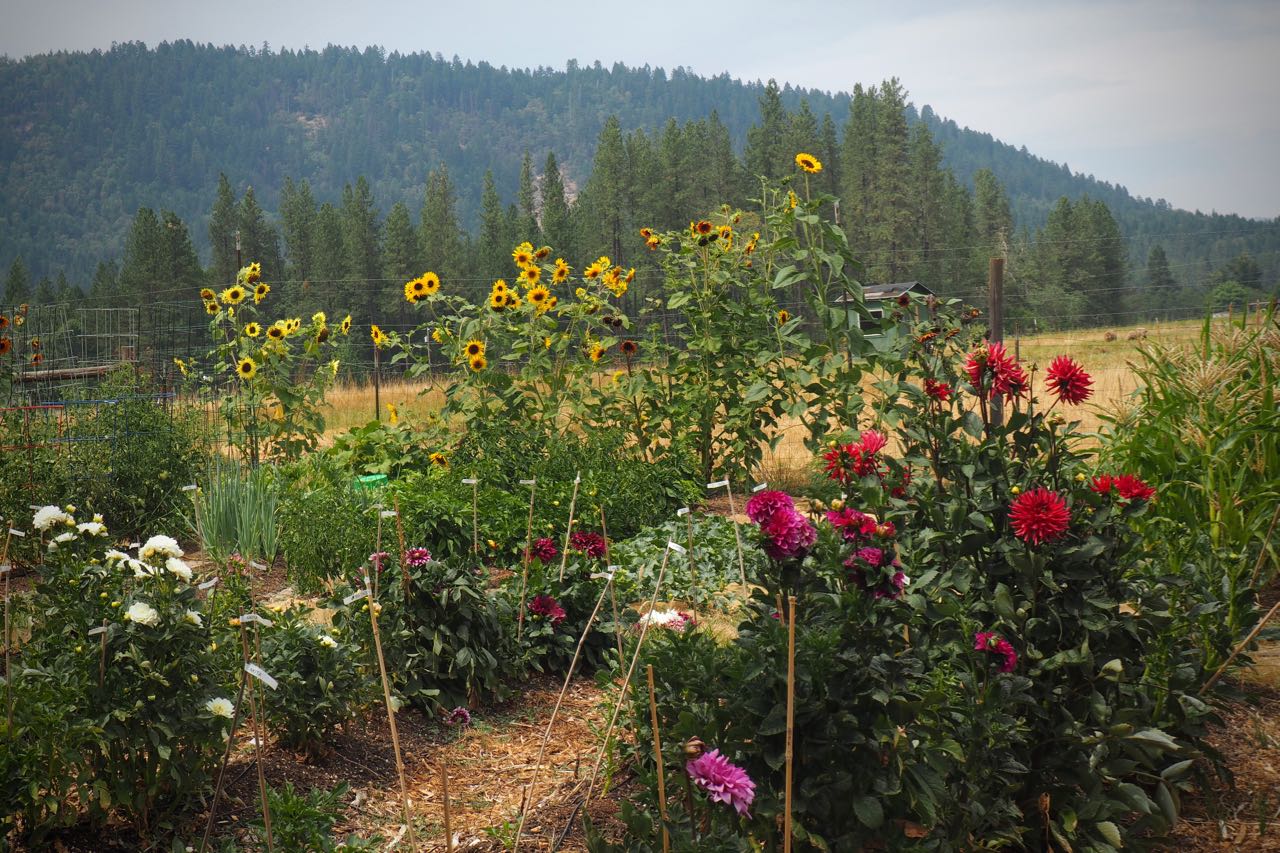
New Cart System
With the change of hands back and forth IUH now has a simple new website and a new cart system. Over the summer with our beta run there seemed to be a lot of issues with the cart system—inability to enter a sliding scale price, no “add to cart” button, cart not working etc. I am new to woo commerce and hope to sort these issues out but it is hard to do without your help, as the system works perfectly here for me on my machine. If the cart doesn’t work for you, please can you kindly let me know what OS you are using, what browser & version and describe what the problem is—screenshots are helpful. I will do my best to try to locate the issue. I have also posted some tips on our help page for navigating round the problem.
Weeds, gotta Love em
For some reason weeds always seem the worst to me in the fall. The garden is established and weeds have also had time to get established, hiding under food plants and getting ahead of me in the perennial beds. Some weeds are easily pulled and disposed of, others are pernicious and persistant. Weeds are easiest to pull when small, as many have deep tap roots. When weeding, try to get the entire plant, pulling it up by the roots. Noxious weeds like blackberry, burmuda grass and bindweed can grow back from even a small piece of root or stem. These plants should be left on a tarp to dry thoroughly before being added to your compost. It is also best to pull the weed before it goes to flower and spreads its seed. A weed that has flower heads or seeds should be put in the green bin, where it will be sent to the city compost which is guaranteed to be hot enough to kill the seeds. One of our worst local weeds is Oxalis, a South American invasive which spreads by producing dozens of tiny bulblets along a tap root. When you pull the plant it leaves the bulblets behind. Oxalis should be pulled as soon as it appears in the winter and before it has time to create more bulblets. If you have chickens you can allow them to scratch and dig in the area you have oxalis, they will seek out and eat the bulblets. Learning your weeds, how they grow and how they pull is a lifelong process. To identify a weed you will need to let it grow and bring it to a nursery or ask an experienced gardener. Most plants are best identified if they have their flower. But most of all—just keep at it…weed a little every day to make way for your preferred plants.
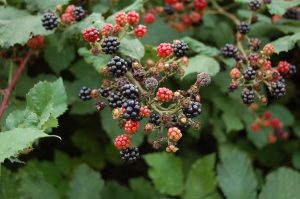
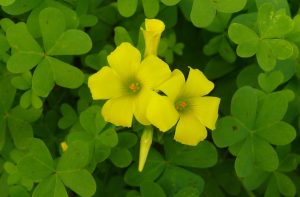
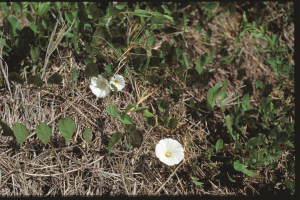
Beautiful but pernicious! Himalayan Blackberry, Bindweed and Oxalis
Easy Cookins~ Rough Cut Salsa
3 Garden tomatoes
1 Onion
1 Ear sweet corn
1 small bell or gypsy pepper
1 jalapeno pepper
1 bunch cilantro
1 lemon
salt
Dice tomato, onion and sweet pepper and place in a bowl. Cut the kernels of the corn into the bowl. Mince jalapeno and a goodly amount of cilantro. Squeeze the juice of one lemon over everything, mix and salt to taste. Serve with chips, in tacos or use for a fresh version of huevos rancheros. Yum yum & easy done!
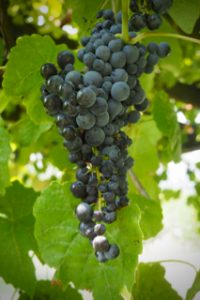
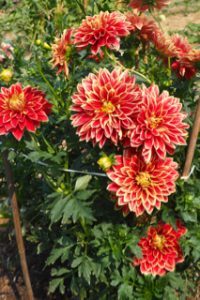
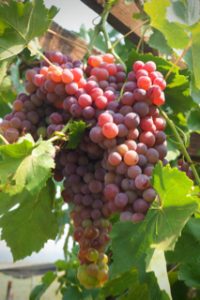
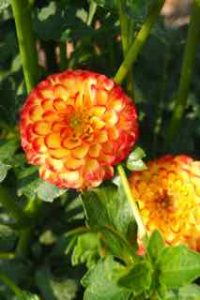

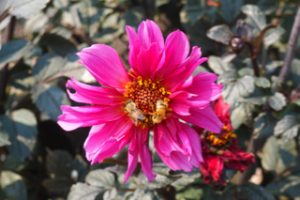
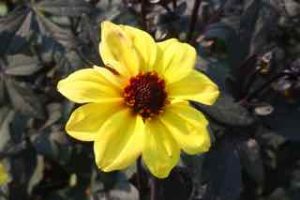
AUGUST 2017
High summer, dry soils, foggy mornings, pleasantly long mild days….we are getting back on track here at IUH, with a weekend of wonderful classes coming up and our Fall season shaping up nicely. We’ll have some interesting new offerings from our own permaculture chef, Seth Peterson, some old standards from myself, a Winter Open House to look forward to and more! Wishing you a wonderful wrap up to your summer with a bounty of harvest and fun!
On gardening in a new climate
I gardened in the Bay Area for over 30 years. Some gardening is the same wherever you are: “Feed the soil, not the plant,” “when in doubt, add compost,” “keep seeds evenly moist with both light and heat to germinate”….And while the climate in Southern Oregon is not vastly different than the Bay Area it is different enough that I need to pay attention and learn new methods. I mention this for the many of you who have moved to the Bay Area and feel you have to learn all over again. Paying attention is the greatest portion of gardening. Start with what has worked for you in the past, listen and learn from your plants, adjust for climate and water needs. Learn what grows well bio-regionally and don’t torture yourself by trying to grow things that will not thrive. Learn new weeds and how they grow. Talk to locals and learn what works for them. Tomatoes not growing well? Bumper crop of peas? It is likely that others in your area are experiencing similar challenges or bounties. Find gardening friends and a planting guide for your area (Pam Pierce’s book, Golden Gate Gardening is an excellent resource). Local garden clubs are a wonderful resource and are populated by little old ladies who will love an insurgence of new blood and new methods.
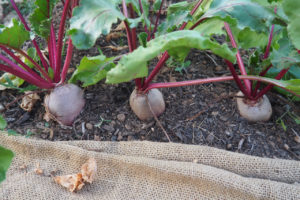
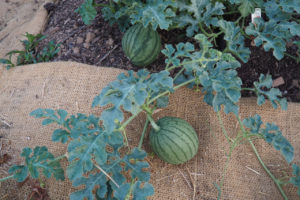
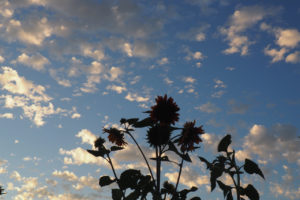
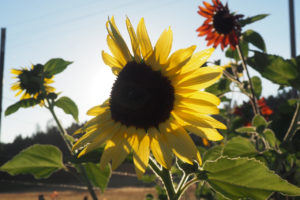
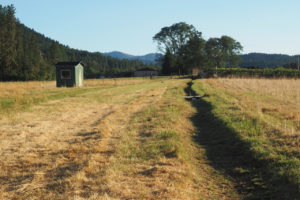
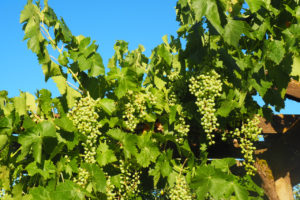
Fall Gardening in The Bay Area
August 1st is the time to start thinking about your Fall/Winter garden in the Bay Area. Think about putting in lettuce, cole crops (broccoli, kale, collards, cauliflower), peas and root crops (radish, turnips, carrots, beets). Raddiccio and chicory are great lesser known winter greens. Plants started in the month of August and even into early September will be ready to harvest in October and November and your root crops and hardy greens will grow through the winter. It is always tough getting things going this time of year as the soil is so dry and plants need good water to spread their roots and get established. Hand water your seed beds twice a day to keep seeds moist. Soak starts and beds thoroughly before planting. Drip irrigation is key. You can spray your collards, kale and broccoli with compost tea to boost their immune systems and help prevent powdery mildew and aphids.
Call for Teachers ~ Deadline August 10
I know it is short notice, but there is room available in our Fall calendar/curriculum and we’d love to add a few more offerings. I would need your proposal by August 10 (sooner is better) to be able to include in our printed promotional materials. Please refer to Teaching at IUH for guidelines. and don’t sweat it—as long as you include the information we ask for the proposal can be pretty casual. You do need to have an appropriate space to teach from and a class topic that is not already offered in our curricula.Please email to this address.
News from the Farm: Sun & Water
The hot summer months are intense here The once beautiful lush green grass has dried to a crisp. The best times to work are before 11am and after 7pm…avoiding the sun in the heat of the day. We have been playing with and in water. I enjoyed two long days experimenting with flood irrigation—greening up our middle pasture to feed our growing flock of sheep. We’re to 21 now, a motley crew of Coopsworth, Cotswald, Gotland, Navaho Churro and Shetland. Our new fine fiber ram is a Blue Faced Leicester
Where does 120,000 gallons of water go? In some ways this is still a mystery. The flood irrigation system we inherited is archaic…damming ditches with sheets of plastic to spread the water out. I guess we’ll know how well we did when we see where green grass grows. By next year we will hopefully dial in a polytube irrigation system… these are long tubes that you install water gates in…. much easier to control where the water goes and spread it evenly across the field.
We are finally harvesting from our fruit trees and garden, plums, zukes, cukes and peppers. The heat is frying some of the lettuce and our wonderful dahlia collection is struggling along with the scorching sun. The melon plants, on the other hand, are loving it. A food I adore that I have never been able to grow in my whole gardening life!
And in the last 2 weeks our dog population has grown. We got 2 more guardian dogs—another Komondor—likely a full brother of our Daphne was rescued from a pot farm where he was bored and neglected. And Squatch, a four way cross of rare guardian breeds has come to us from a sheep farm in Napa.
Summer Roots: Beet Quinoa Salad
Ingredients 2-3 medium beets, 1 cup white quinoa, 1-2 scallions, fresh dill, feta cheese (optional), olive oil, balsamic vinegar, tamari or braggs
Boil the beets until the skins slip off easily—about a half hour. While the beets are boiling, add 1.5 cups water to the quinoa in a pot and simmer until cooked —you usually have to add another half cup of water before it is done. Slide the skins of the beets off by hand, dice and add to a bowl along with the quinoa. Add 1-2 minced scallions, a tablespoon or more of fresh minced dill and a quarter cup of crumbled feta cheese. Toss with equal parts of olive oil, balsamic vinegar & tamari ( 2-3 tablespoons each). Yum!
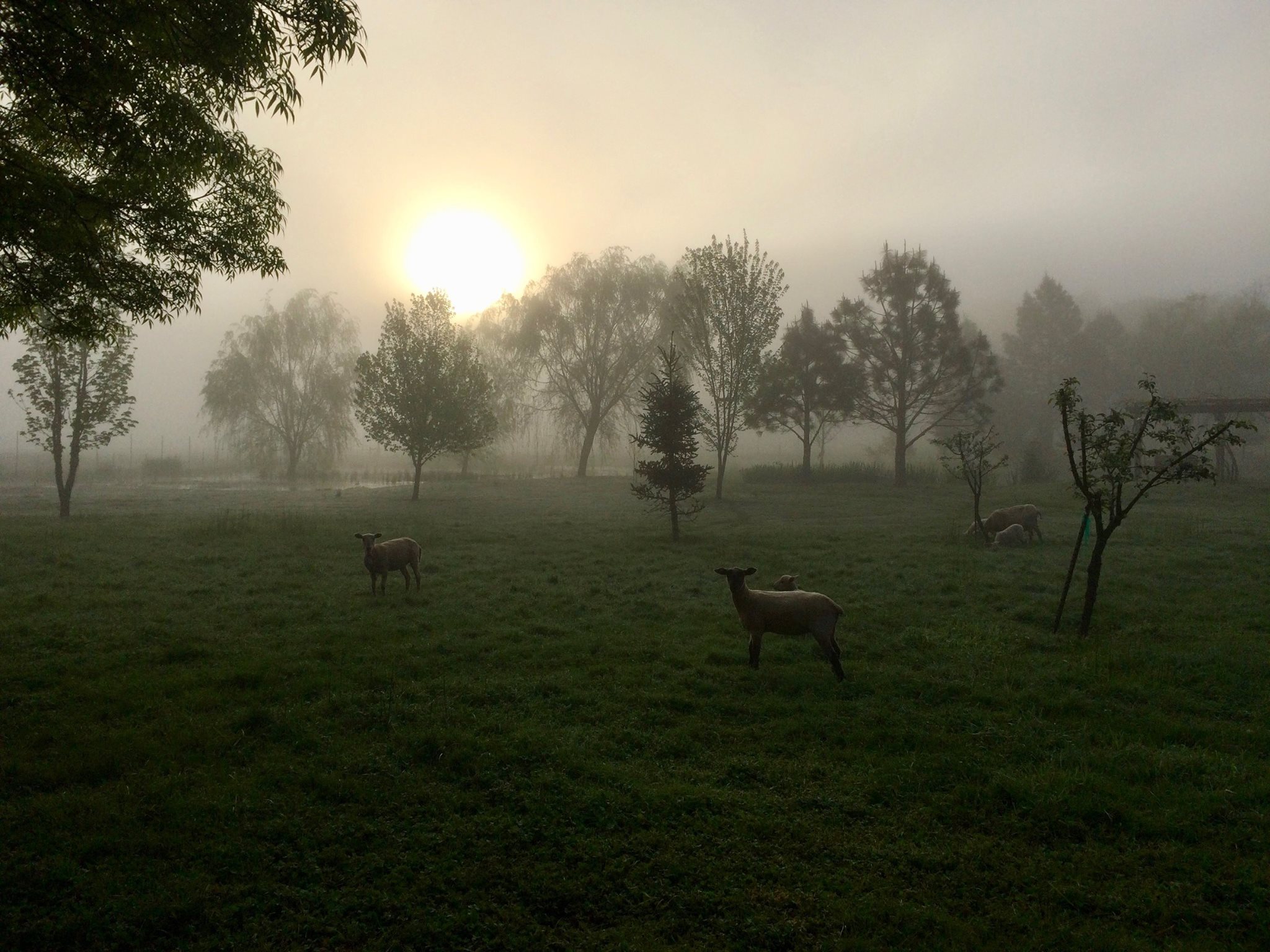
sheep in the morning dew. photo: Joanna Moody
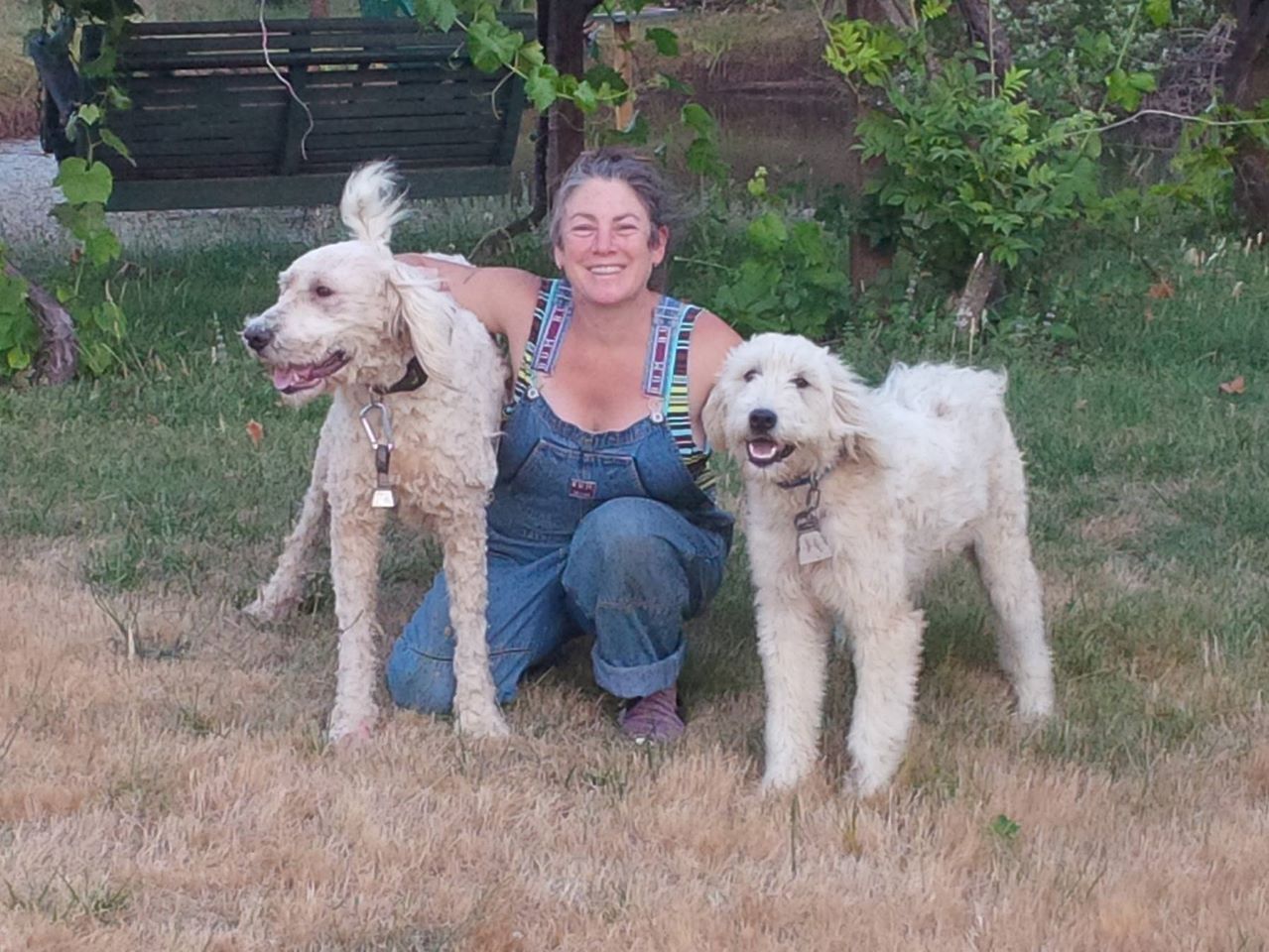
with Daphne and The Dude. photo: Jreed